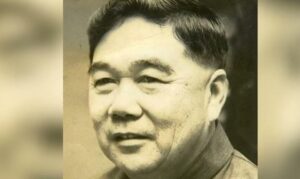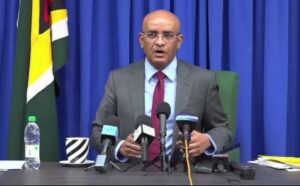Guyana is a country on the northern mainland of South America and has a rich history marked by diverse leadership. Since gaining independence from British rule in 1966, Guyana has had a series of presidents who have shaped its path.
READ ALSO: Presidents That Have Ruled Colombia Till Date
Here’s a detailed look at the presidents of Guyana.
| President | Term Start | Term End |
|---|---|---|
| Arthur Chung | 1970 | 1980 |
| Forbes Burnham | 1980 | 1985 |
| Desmond Hoyte | 1985 | 1992 |
| Cheddi Jagan | 1992 | 1997 |
| Sam Hinds (Acting) | 1997 | 1997 |
| Janet Jagan | 1997 | 1999 |
| Bharrat Jagdeo | 1999 | 2011 |
| Donald Ramotar | 2011 | 2015 |
| David A. Granger | 2015 | 2020 |
| Irfaan Ali | 2020 | Present |
The First President: Arthur Chung

Arthur Chung was Guyana’s first President, serving from 1970 to 1980. Before becoming President, Chung had a distinguished career in law and served as a magistrate.
Achievements:
- Constitutional Reforms: Under Chung’s leadership, Guyana transitioned from a monarchy to a republic in 1970. This change marked a significant step in the country’s independence and sovereignty.
- Development Initiatives: Chung’s tenure saw the initiation of various development projects aimed at improving infrastructure and public services.
Downsides:
- Limited Political Power: Despite being the president, Chung’s role was largely ceremonial, with real power resting with the Prime Minister, Forbes Burnham.
- Economic Challenges: The country faced significant economic difficulties, including inflation and unemployment, which were not fully addressed during his tenure.
READ ALSO: Presidents That Have Ruled Peru Till Date
The Current President: Irfaan Ali

Dr. Irfaan Ali, the current President of Guyana, took office in August 2020. With a background in economics and urban planning, Ali has focused on modernizing Guyana’s economy and infrastructure.
Achievements:
- Economic Growth: Under Ali’s administration, Guyana has experienced substantial economic growth, largely driven by the burgeoning oil industry. The country has become one of the fastest-growing economies in the world.
- COVID-19 Response: Ali’s government implemented comprehensive measures to tackle the COVID-19 pandemic, including vaccination drives and economic relief packages.
Downsides:
- Political Tensions: Ali’s tenure has been marked by political tensions and allegations of electoral fraud, which have sometimes overshadowed his administration’s achievements.
- Environmental Concerns: The rapid development of the oil sector has raised environmental concerns, with critics arguing that more needs to be done to ensure sustainable practices.
The Current Vice President: Bharrat Jagdeo

Bharrat Jagdeo, who served as President from 1999 to 2011, is the current Vice President of Guyana. Jagdeo has been a prominent figure in Guyanese politics for decades.
Achievements:
- Economic Reforms: As President, Jagdeo implemented significant economic reforms that stabilized the Guyanese economy and attracted foreign investment.
- Climate Change Leadership: Jagdeo gained international recognition for his leadership on climate change, particularly through the Low Carbon Development Strategy (LCDS), which aimed to protect Guyana’s forests while promoting sustainable development.
Downsides:
- Corruption Allegations: Jagdeo’s administration faced numerous allegations of corruption, which tarnished his legacy and raised concerns about governance in Guyana.
- Social Issues: Despite economic growth, social issues such as poverty and inequality remained significant challenges during Jagdeo’s presidency.
Conclusion
Guyana’s presidential history is marked by a mix of achievements and challenges. From Arthur Chung’s symbolic leadership in the early days of the republic to Irfaan Ali’s current efforts to harness the country’s economic potential, each president has played a crucial role in shaping Guyana’s destiny.
Similarly, Vice President Bharrat Jagdeo’s contributions to economic reforms and climate change have left a lasting impact.
